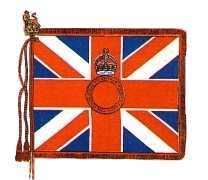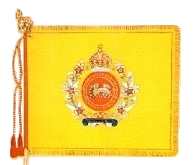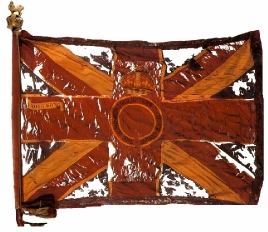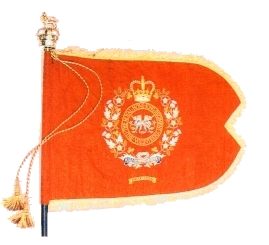The Volunteers had been in existence for 66 years before they were presented with Colours. On the recommendation of Lt Col L G Bird and supported by Maj Gen C C Luard, GOC of the Colony, the proposal that the Corps should be granted Colours was forwarded to the Secretary of State for the Colonies for consideration. On 27 August 1927, His Majesty the King signified his approval.
Now the question arose of the design of the new Colours. Captain Dowbiggin suggested to Lt Col Bird that the design should be based on the Colours of the Hong Kong Regiment which were hanging inside St John's Cathedral. The Hong Kong Regiment, not to be confused with the later regiment descended from the Volunteer Corps was an Indian Regiment raised in 1891 for "General Service" under the War Office for garrison duty in Hong Kong. Although the Regiment distinguished itself and fought in Tiensin at the time of the Rebellion, the pay offered to the men was so much more than that offered to other Indian regiments that it seriously affected recruiting and the Regiment was disbanded in 1902. |









